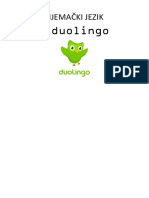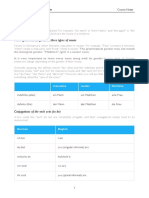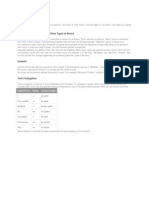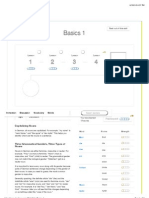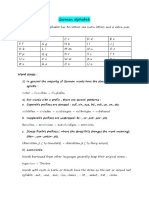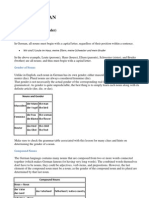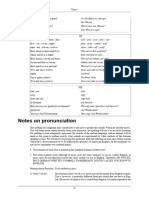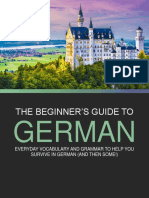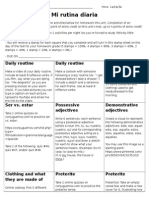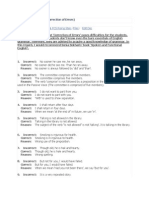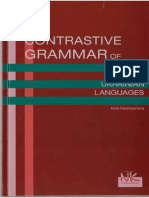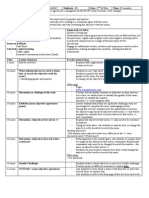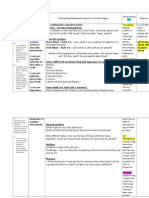0% found this document useful (0 votes)
87 views3 pagesTips and Notes: Capitalizing Nouns
This document provides an overview of some key aspects of German grammar, including:
1) All nouns in German are capitalized, and nouns have a grammatical gender of masculine, feminine, or neuter which determines the definite and indefinite articles used.
2) Verbs are conjugated according to person and number, with regular verbs following predictable patterns and the verb "sein" being irregular.
3) Umlauts and pluralization can impact word meaning and sounds, and the continuous aspect is not distinguished in verbs as it is in English.
Uploaded by
jannaneCopyright
© © All Rights Reserved
We take content rights seriously. If you suspect this is your content, claim it here.
Available Formats
Download as DOCX, PDF, TXT or read online on Scribd
0% found this document useful (0 votes)
87 views3 pagesTips and Notes: Capitalizing Nouns
This document provides an overview of some key aspects of German grammar, including:
1) All nouns in German are capitalized, and nouns have a grammatical gender of masculine, feminine, or neuter which determines the definite and indefinite articles used.
2) Verbs are conjugated according to person and number, with regular verbs following predictable patterns and the verb "sein" being irregular.
3) Umlauts and pluralization can impact word meaning and sounds, and the continuous aspect is not distinguished in verbs as it is in English.
Uploaded by
jannaneCopyright
© © All Rights Reserved
We take content rights seriously. If you suspect this is your content, claim it here.
Available Formats
Download as DOCX, PDF, TXT or read online on Scribd
/ 3









